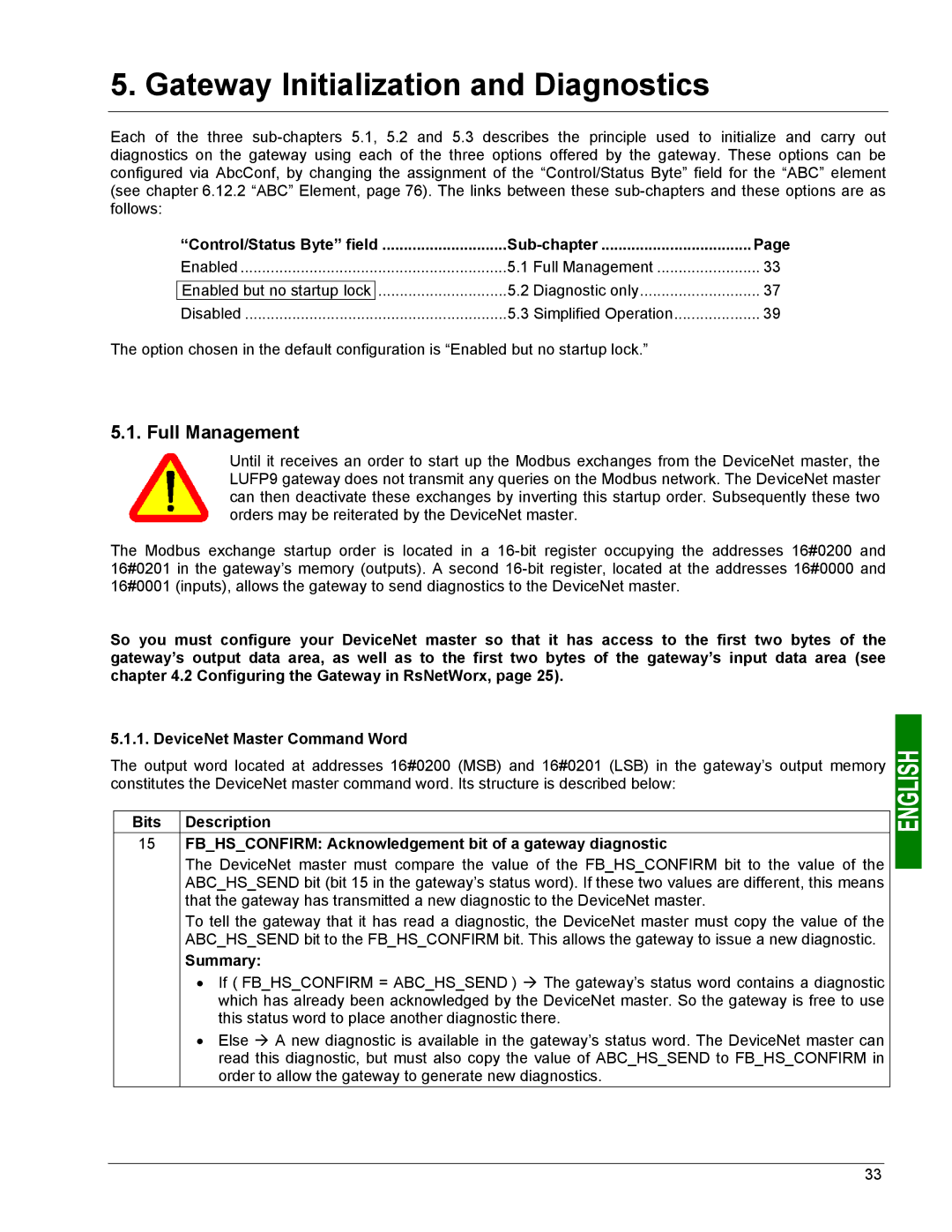
5. Gateway Initialization and Diagnostics
Each of the three
“Control/Status Byte” field |
| Page |
Enabled | 5.1 Full Management | 33 |
Enabled but no startup lock | 5.2 Diagnostic only | 37 |
Disabled | 5.3 Simplified Operation | 39 |
The option chosen in the default configuration is “Enabled but no startup lock.”
5.1. Full Management
Until it receives an order to start up the Modbus exchanges from the DeviceNet master, the LUFP9 gateway does not transmit any queries on the Modbus network. The DeviceNet master can then deactivate these exchanges by inverting this startup order. Subsequently these two orders may be reiterated by the DeviceNet master.
The Modbus exchange startup order is located in a
So you must configure your DeviceNet master so that it has access to the first two bytes of the gateway’s output data area, as well as to the first two bytes of the gateway’s input data area (see chapter 4.2 Configuring the Gateway in RsNetWorx, page 25).
5.1.1. DeviceNet Master Command Word
The output word located at addresses 16#0200 (MSB) and 16#0201 (LSB) in the gateway’s output memory constitutes the DeviceNet master command word. Its structure is described below:
Bits Description
15FB_HS_CONFIRM: Acknowledgement bit of a gateway diagnostic
The DeviceNet master must compare the value of the FB_HS_CONFIRM bit to the value of the ABC_HS_SEND bit (bit 15 in the gateway’s status word). If these two values are different, this means that the gateway has transmitted a new diagnostic to the DeviceNet master.
To tell the gateway that it has read a diagnostic, the DeviceNet master must copy the value of the ABC_HS_SEND bit to the FB_HS_CONFIRM bit. This allows the gateway to issue a new diagnostic.
Summary:
•If ( FB_HS_CONFIRM = ABC_HS_SEND ) Æ The gateway’s status word contains a diagnostic which has already been acknowledged by the DeviceNet master. So the gateway is free to use this status word to place another diagnostic there.
•Else Æ A new diagnostic is available in the gateway’s status word. The DeviceNet master can read this diagnostic, but must also copy the value of ABC_HS_SEND to FB_HS_CONFIRM in order to allow the gateway to generate new diagnostics.
33
